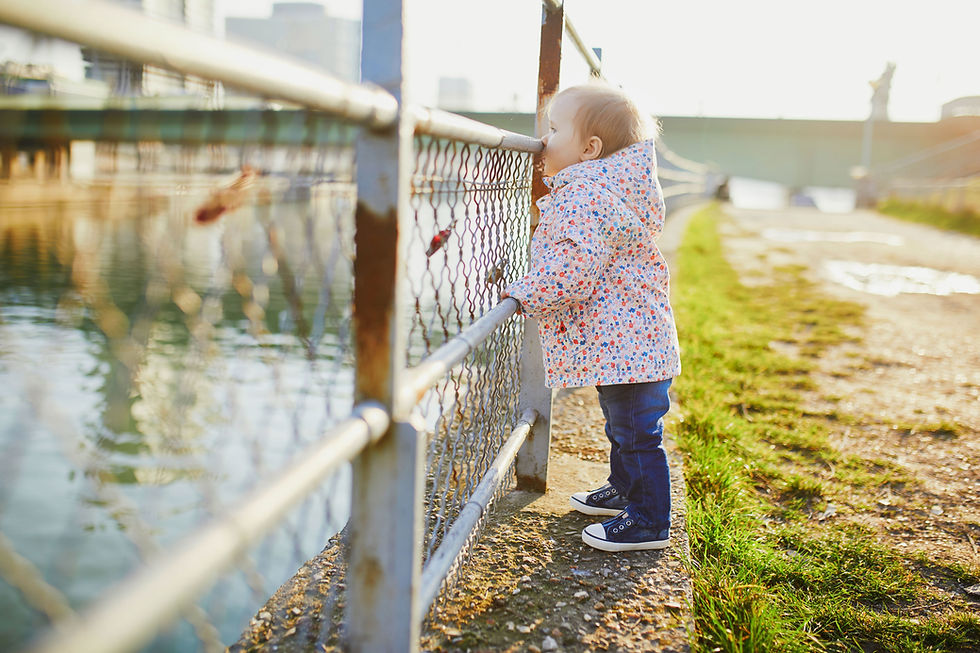Embracing the Wild Side: A Parent's Guide to Kids' Behavior in New Activities
- Brad Smeja

- May 26, 2023
- 3 min read
Updated: Jun 3, 2023
Have you ever noticed how crazy your kids are when they jump into a new activity?
Imagine this: you bring your precious child to a brand-new activity, like a gymnastics class or a ninja training camp, and suddenly, they transform into a mini tornado! They're bouncing off the walls, climbing like Spider-Man, and acting like they just won the lottery. You may find yourself blushing and thinking, "Oh no. What possessed this gremlin of mine?" Let me tell you a secret: this wild behavior is more common than you might think!
Understand that when children step into a new environment, it's like entering a whole new universe. Everything is shiny, new, and filled with possibilities. It's like discovering a treasure map with hidden gems waiting to be explored! But here's the catch: kids don't come with an instruction manual. They're like those unpredictable wild animals you see on nature documentaries, bouncing around without a care in the world.
When children encounter something new and exciting, their brains go into overdrive. It's like a rollercoaster ride inside their heads, with emotions and curiosity racing at full speed. Just imagine a troop of monkeys swinging from tree to tree, hooting and hollering with delight—that's what's happening inside their precious little minds.
So, what can we learn from this wild phenomenon? Well, the truth is, kids are wired to explore, play, and be curious. They're like little scientists on a never-ending quest for knowledge. And when they step into a new activity, their inner scientist takes the wheel. They want to test their boundaries, push their limits, and see what this brave new world has to offer. It's their way of figuring things out, like tiny explorers embarking on a grand adventure.
Now, dear parents, let's talk about the importance of patience. You might be thinking, "Patience? Are you kidding me? I'm already juggling a million things!" Trust me, I feel you. But here's the thing: patience is the secret superpower we all need when dealing with our wild little adventurers.
Remember, Rome wasn't built in a day, and neither were well-behaved children. It takes time for them to adjust to new situations. So, the next time you find yourself in a situation where your child is swinging from the chandeliers or running around like a headless chicken, take a deep breath and remind yourself that this is normal. They're simply embracing their natural curiosity and letting their imaginations run wild.
In fact, think of it as a comedy show starring your child as the main character. You can sit back, relax, and enjoy the wild ride while sipping a cup of coffee (or maybe a glass of wine if it's been an especially challenging day!). Remember, laughter is the best medicine, and finding humor in these wild moments can make the experience more enjoyable for both you and your child.
While we encourage embracing your child's wild side, it's essential to establish boundaries and guide them through new activities. Here are a few strategies to help you navigate the uncharted territory of their adventures:
1. Set Expectations
Before starting a new activity, have a chat with your child about what behavior is acceptable and what is not. Explain the importance of listening to instructors and following safety rules.
2. Encourage Communication
Let your child know that they can always talk to you about their experiences, fears, or any concerns they may have. Open communication builds trust and helps them feel more at ease.
3. Lead by Example
Show your child how to behave appropriately by demonstrating good sportsmanship, patience, and respect for others. They look up to you as their role model, and your actions speak louder than words.
4. Celebrate Small Victories
Acknowledge and praise your child's efforts and achievements. Whether they successfully complete a new skill or simply show improved focus, celebrating their progress boosts their confidence and encourages positive behavior.
5. Emphasize the Joy of Learning
Remind your child that trying new activities is about having fun and learning, not just about being the best. Encourage them to embrace the process of exploration and growth rather than focusing solely on the end result.
Parents . . . don't fret when your child unleashes their inner wildness during new activities. It's a natural part of their development and a sign of their curiosity and thirst for adventure. By understanding the science behind their behavior, exercising patience, and guiding them with love and encouragement, you can foster a positive environment where they can explore, learn, and thrive.
Plus, it never hurts that we have a giant padded floor for them to bounce off of.




Comments